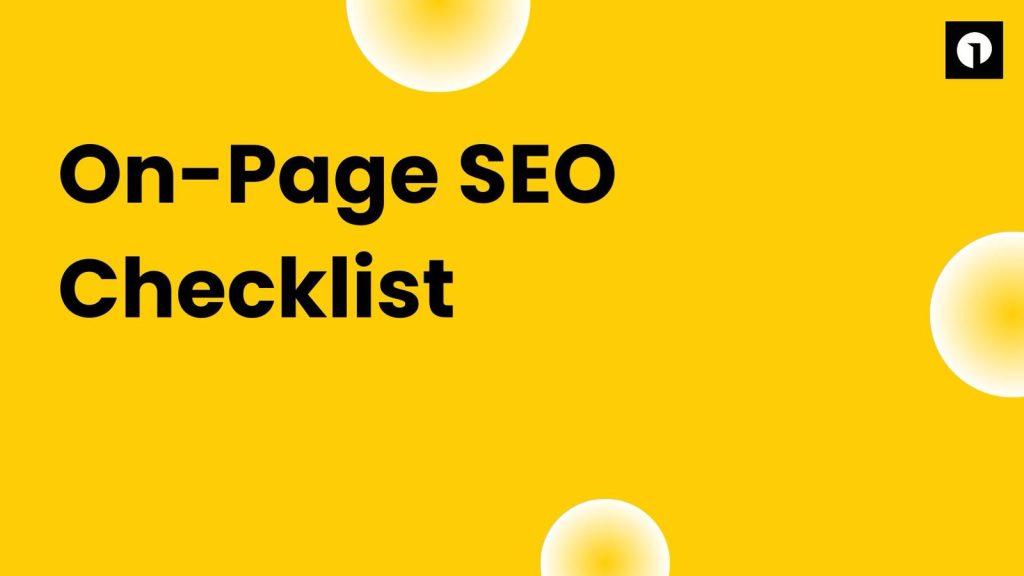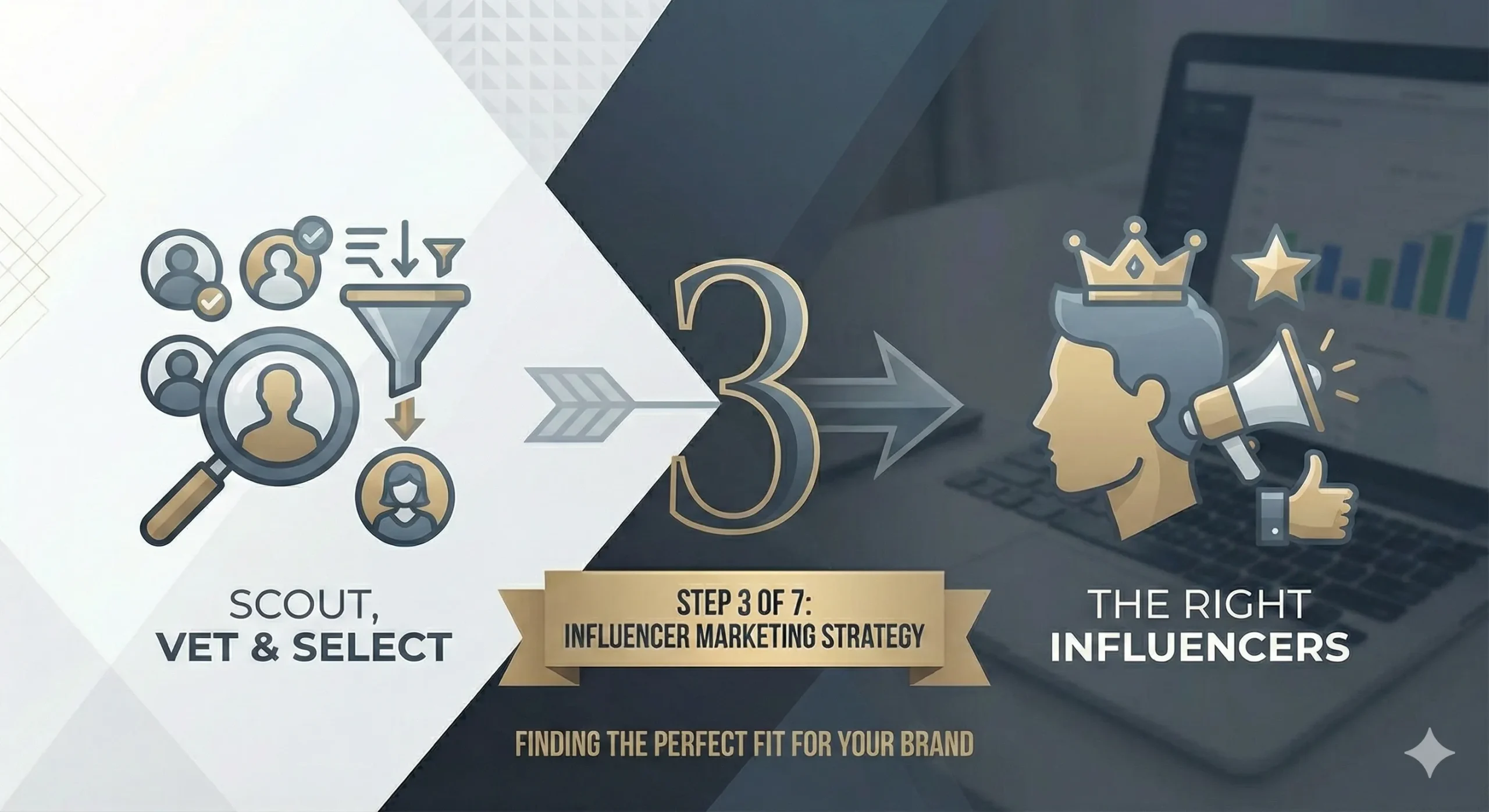SEO (search engine optimization) is the process of improving the performance, experience, and authority of your website to gain better visibility in search engines like Google. This includes on-page SEO, which focuses on optimizing individual web pages through elements like content quality, keyword usage, and meta tags. Technology is constantly evolving, affecting how websites are structured.
Following is the On-Page SEO checklist in order to ensure the best possible results which are in your favour:
- Identify target keywords-
Form a focus group with your team and spend a substantial amount of time tossing around ideas for targeted keywords. The key here is to put yourselves in the shoes of your customer. Imagine you were a prospect in need of your service, what would you type into Google? Set aside your jargon and insider information and think solely from the viewpoint of an outsider. For instance, if your brand operates as a social media marketing firm, it’s important to recognize that your keywords shouldn’t only target searches including the term “Social Media,” but should also encompass relevant terms beyond that.
Take some time scouring the keyword section of your web statistics. This section shows which keywords that people are typing into search engines, turn up your page as a result. More than likely, you will want to move past the first 10 results because these are probably branded and have to do with your name. While it is great that customers and prospects have heard of you and are typing your name directly into search engines, your challenge and ultimate goal is to be found for general search terms that people who have never heard of you are typing in. So, look at that second page of results to see what words are leading to your site.
Go online and see what people are interested in as well as what your competitors and industry leaders are doing to get found. You can tell what others consider their keywords to be by looking at their landing pages, the specialized pages within their website. Use various platforms, like Google AdWords, to see what the monthly traffic numbers are for various search queries. This will tell you what words are getting searched the most. With this information, you will want to consider whether a highly searched term is worth working to rank for or if it is so highly searched, like “car”, that you don’t want to focus all of your energy on such a feat.
- Optimize the Title Tag
Using synonyms for your keywords that have lower competition rates. Search engines can easily identify associations and return them in search results, depending on other SEO factors.
You can use pipes (|) to separate terms in your titles to make them look clean in search results. It is easier for users to quickly scan your title tag for relevant information when the words in your title tag are separated into two or three different sections by a pipe symbol. This improves usability. For example:
<title>Digital Marketing Services | SEO Optimization | Social Media Management</title>
If your niche is competitive, try using long-tail keywords that are specific to what your target users might type in search engines rather than more competitive keywords. Your site’s title tags are more likely to rank high in the SERPs for key phrases, rather than keywords. This also ensures that your site is shown to a target audience in the SERPs, thus hopefully increasing your click-through rate and possibly improving your site’s position in the SERPs. For example:
<title>Affordable Digital Marketing Services for Small Businesses | Best SEO Tips for Local Businesses</title>
- Write Your Headline in an H1 Tag
An SEO H1 Tag should be used sparingly—it doesn’t get more effective if you keep adding more of them. In fact, you should only have a single H1 tag in your HTML code. Why? Because there is simply no benefit to having more than one H1 tag per page. Having multiple H1 tags on a page can be confusing to both site users and search bots. Your H1 title tag should contain the target keyword that you want to rank your page for in search engines for (more on that later).If you use multiple H1 tags, the search bot that’s crawling your page may not know which keyword is the primary keyword you are targeting. It may choose one that doesn’t match the intent of your page.
Each additional H1 could also reduce the ranking pull of those headings. If you take your SEO seriously, that’s the exact opposite of what you want to accomplish. If you need other headings to break your web page into sections, don’t use H1s—use <h2>, <h3>, <h4>, <h5> and <h6> instead. Unlike the H1 title tag, you can have as many H2 tags to H6 tags on your page as you want. They can cover a range of different subtopics without confusing the intent of the page as a whole.
- Write a Meta Description That Boosts Clicks
The purpose of a meta description is simple: it needs to get someone searching with a search term on Google to click your link. In other words, meta descriptions are there to generate click-throughs from search engines.
Search engines say there is no direct SEO benefit from the meta description – they don’t use it in their ranking algorithm. But there is an indirect benefit: Google uses click-through rate (CTR) to determine whether you’re a good result. If more people click on your result, Google considers you to be a good result and will – based on your position – move you up the rankings. This is why optimizing your meta description is important, as is optimizing your titles.
Unfortunately, there is no guarantee that Google will display the description that you’ve written. But, as there is a chance it will, adding it to your post or page is always worth the effort.
A few things to keep in mind before you write a good meta description:
- Keep it up to 155 characters.
- Use an active voice and make it actionable.
- Include a call to action.
- Use your focus key phrase.
- Show specifications when needed.
- Make sure it matches the content of the page.
- Make it stand out.
5. Check the URL Slug for SEO-Friendliness
URL slugs are important to search engines because they are important to visitors. While the URL slug itself won’t have a direct impact on your rankings, it will influence the visitor’s decision-making process for whether or not to click on your site. URL slugs are part of the snippet shown in the SERP and are an indicator to visitors if the page will have related content and satisfy what they are searching for.
It also contributes to overall user experience; messy URLs can be confusing and unclear to visitors and even lead to them questioning the quality of your site.
Some of the best practices for how to write URL slugs are as follows:
- 1. Make them readable
- 2. Include relevant keywords
- 3. Keep it short
- 4. Future-proof by removing dates and numbers
- 5. Stick to lower-case
- 6. Use hyphens
6. Add Target Keywords to Your Body Content
Include the primary keyword in the first 100-150 words of your article. This helps search engines identify the topic of your content right away. For example: “When it comes to choosing the best DSLR camera, you need to consider various factors.”
Integrate the keyword evenly across your body content without overstuffing. Aim for a keyword density of around 1-2% of the total word count. Use variations of your main keyword (called LSI keywords), such as synonyms or related phrases, to avoid repetition and maintain readability. For example: If the keyword is “healthy snacks,” you can also mention “nutritious snacks,” “low-calorie treats,” or “snacks for a healthy diet.”
Use your target keywords in H2 and H3 headings to reinforce the relevance of the topic and help search engines understand the structure of your content. For example: An H2 heading could be “Top 5 Best DSLR Cameras for Beginners.”
Include links to related content on your site using keyword-rich anchor text. This helps with SEO and keeps users engaged with more content on your website. For example: Link phrases like “learn more about DSLR camera settings” to another relevant post on your blog.
7. Mark up Subheadings with Header Tags
The easiest way to add subheadings in HTML is by using heading tags. HTML provides six levels of headings (<h1> to <h6>), where <h1> is the highest level, typically used for the main heading, and <h2> and beyond are used for subheadings. Subheadings are written in a tag with a lower level than the main heading, such as <h2> or <h3>. For example: In the following example, the main heading uses the <h1> tag, and the subheading uses the <h2> tag to demonstrate the hierarchy of content.
Another method to add subheadings is by using the <div> tag along with CSS styling. The <div> tag is a generic block-level container and is often used to create sections within a webpage. While it doesn’t inherently carry the same semantic meaning as heading tags, it can be styled to look and function like a subheading. This method gives more flexibility for custom styling. Use the <div> tag to create a section and apply custom CSS styles to make it visually similar to a heading tag. This method is useful when you want full control over how the subheading looks, without being limited to the default styles of HTML headings. For example: In the following example, the <div> tag is used for the subheading, styled with CSS to look like a subheading.
8. Improve Navigation with Internal Links
Ensure that your anchor text is descriptive and includes relevant keywords. This helps users understand what they’re clicking on and boosts SEO by signaling the content of the linked page to search engines. For example:
<a href=”seo-services.html”>Professional SEO Services</a>
Create a clear structure in your navigation with primary categories and subcategories. This helps users and search engines understand the site’s layout and hierarchy, leading to better indexing and user experience. For example:
<ul>
<li><a href=”services.html”>Services</a>
<ul>
<li><a href=”seo-services.html”>SEO Services</a></li>
</ul>
</li>
</ul>
Link to related pages within your content to improve user flow and keep visitors on your site longer. This also passes SEO value to important internal pages, helping search engines discover them. For example:
<p>Learn more about our <a href=”content-marketing.html”>Content Marketing Services</a>.</p>
10. Add Engaging Visual Content
Use images and videos wherever they add value to your content. This includes photos, illustrations, how-to videos, and more. articles with videos get more unique page views, shares, and backlinks.
In case of images, add descriptive alt text to each image. This is a written image description that appears in the page’s code. Another way is to Resize and compress your images with tools like BIRME. That way, your images don’t slow down your page loading time.
In the case of videos, create videos that match search intent. For example, create tutorial videos to support your written how-to guides. Or Host your videos on YouTube—one of the largest search engines on the internet. And embed your videos from there.
10. Apply Schema Markup
Schema markup or structured data is a coding language that “tells” Google more about the different types of data on your site. And the better Google understands your page, the more accurately it can rank your content.
Google also uses these pieces of code to create rich results (or “rich snippets”).
For example, “Recipe” schema helps King Arthur Baking earn a valuable spot on the SERP. And gives users more information about the page’s content—ratings, time to make, and ingredients








